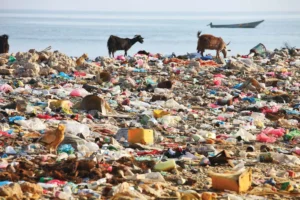India, like everywhere else, is not a perfect place.
In fact, it’s far from perfect.
There is an incredible amount of visible poverty, which nothing truly prepares you to witness. As much as I love it, I always tell people—I’d never live here. I’ve always been fully aware that my experience of India has been very insular. Coming here and going into a yoga training bubble does not give one a true insight into what it’s like to live in this big country. Just like studying yoga for one month isn’t enough to give you a true understanding of the ancient philosophy.
In terms of economy and infrastructure, China is 100% a better place to live. I’m not opposed to living in China again. But again, I’d never live in India.
That’s the thing about travel, isn’t it? Sometimes it lets you peak into a world of what’s possible, causing you to reconsider if your current way of life is the best. Other times, it makes you grateful for all the parts of your daily life and living that you’ve overlooked as privileged. Sometimes, it can do both.
In the case of India, there’s so much to learn from them about the human body and plant medicine. Deeper still, about family, community, and the importance of tradition. But also, I guess, we can learn a lot about what not to do. Much the same as other countries that attract massive tourism because of their historical wisdom, India struggles to spread its funds wider into the country. I complain about it in Jamaica, and then I come here and participate. The disparity of wealth, the hoarding of tourism, and the gatekeeping of knowledge and experience continues to plague so many of these countries as the global wealth gap widens and widens. These funnels of income go somewhere, surely, but you can never quite tell where or how. It’s like the world’s biggest secret. You know there’s a lot of money in existence. You just can’t really tell where it is and who has it—and how they got it and why.
In India, it’s harder to see the wealth than in most other places I’ve been. But then again, the country is massive. I surely haven’t even seen 10% of it. And apparently, the government has lowered the poverty rate by a whopping 33% in the last 10 years. Perhaps if I drove back to Agra from Delhi today, I’d see a lot less tents and families sleeping on the side of the road.
Perhaps.
For now, I will say that being in the city is much less enchanting and rejuvenating than being out in the mountains or more rural areas where it’s not so easy to see the not-so-nice infrastructure. It’s bustling and chaotic and overwhelming. Comparing these cities today to places like Valencia, Sevilla, and generally anywhere in Italy makes it easier to understand why the white man looked down on the land and societies of people of colour. Then again, they only look as they do today because said white men totally destroyed their civilisations and took everything from them to go back and build what we see today as “beautiful architecture”. Leaving them with shitty buildings and irreparable damage in the process.
But, that’s a blog for another day.
The blog for today, which is not where I was going with this originally, but since it’s sat in my drafts for the last few days and things have taken a dramatic turn—is about war.
No country seems to be exempt from leaders who think they can own land or people. No place has learned from history enough to say —what’s the point of killing each other? We haven’t evolved enough yet as a species. Despite all our ancient practices. Nothing changes, generation after generation. War has carried on throughout all of recorded human history. Not a single moment of peace on Earth has been achieved.
And as much as I wrote about how I loved it here in my last post — I just might be in the wrong place at the wrong time.





